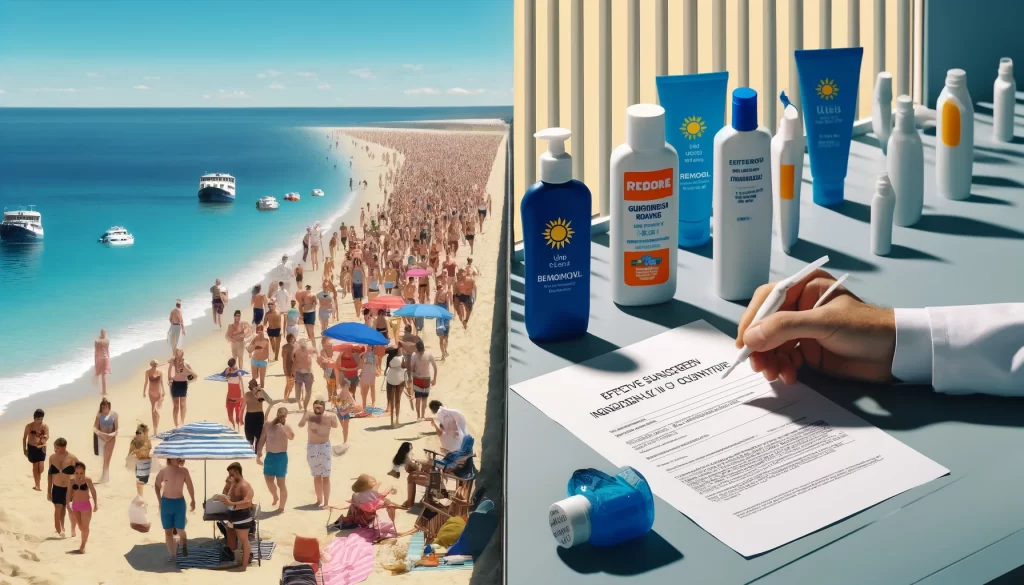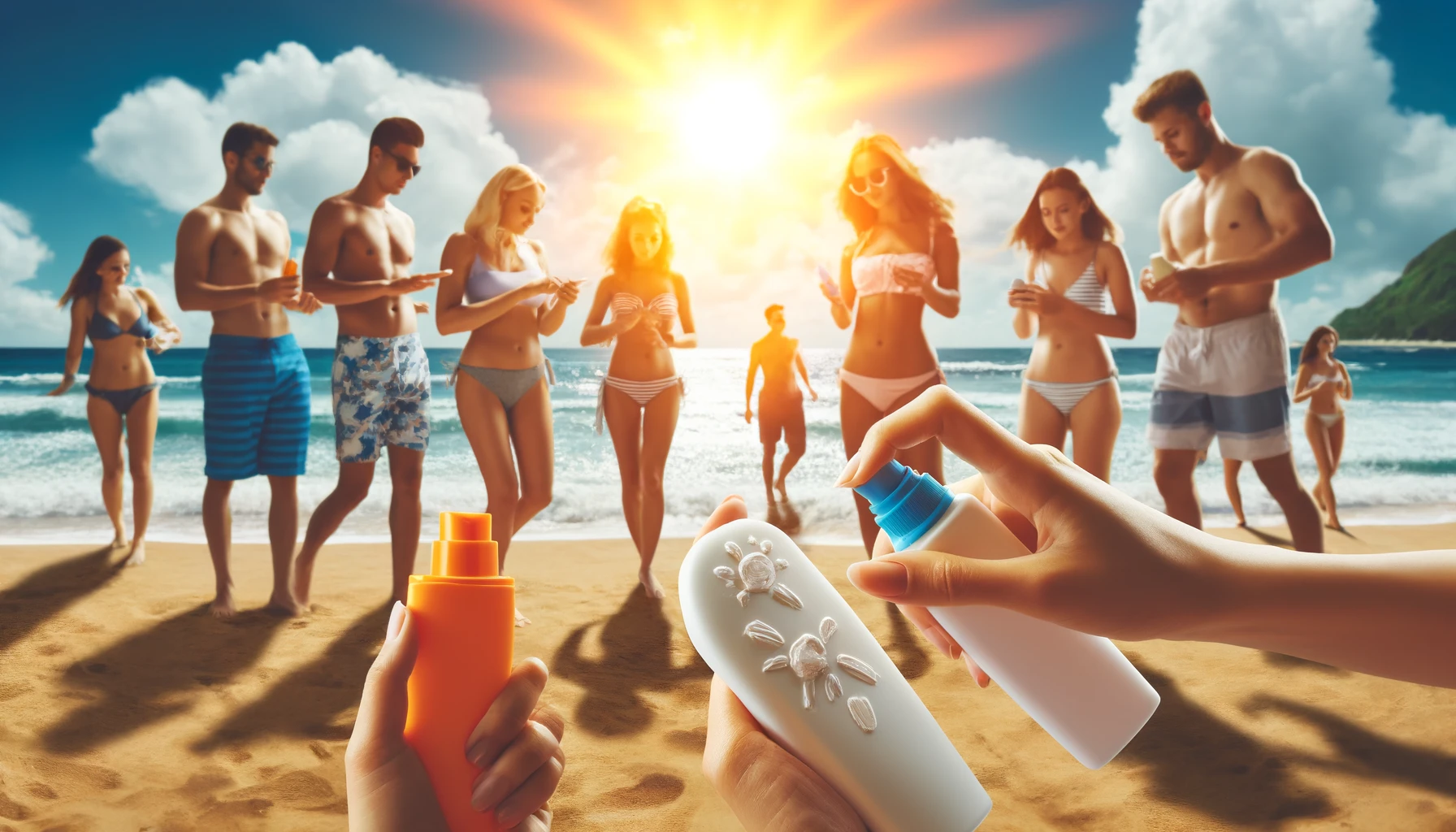Sunscreen is a vital product for protecting skin from the harmful effects of ultraviolet (UV) radiation. However, the availability of sunscreen ingredients varies significantly between countries, with the United States lagging behind in approving newer, more effective ingredients. This article explores the reasons behind this discrepancy and the implications for American consumers.
Current Sunscreen Ingredients and Their Limitations
In the United States, sunscreens are primarily regulated as over-the-counter (OTC) drugs. This classification, based on a 1938 law, requires extensive testing, including animal testing, which slows the approval process. As a result, American sunscreens often lack newer chemical filters that provide better protection against UVA rays, which can cause skin cancer and wrinkles. Dermatologist Adewole “Ade” Adamson from Austin, Texas, notes, “The issue for me isn’t the safety of the sunscreens we have. It’s that some of the chemical sunscreens aren’t as broad spectrum as they could be, meaning they do not block UVA as well. This could be alleviated by the FDA allowing new ingredients.”
Comparison with International Standards
Countries such as Japan, South Korea, and France have approved several new chemical filters that offer broader UV protection. These filters have been in use for years and have demonstrated their effectiveness and safety. For instance, ingredients like bemotrizinol, which are common in European and Asian sunscreens, are not yet available in the U.S. Sunscreen makers argue that U.S. approval standards are unfair. Companies like BASF Corp. and L’Oréal submitted safety data on new sunscreen chemicals to European authorities about 20 years ago.
Challenges with FDA Approval
The Food and Drug Administration (FDA) has been criticized for its slow and cumbersome approval process. Companies are hesitant to go through the FDA process due to its cost and the potential for additional animal testing, which could lead to consumer backlash in Europe, where animal testing of cosmetics is banned. Steven Goldberg, a retired vice president of BASF, explains, “Companies are wary of the FDA process because of the cost and their fear that additional animal testing could ignite a consumer backlash in the European Union.”
Legislative Efforts and Industry Response
There have been efforts in the U.S. Congress to address these issues. A bipartisan bill is currently pending that would require the FDA to allow non-animal testing methods for sunscreen ingredients. In a rare example of bipartisanship, Sen. Mike Lee, R-Utah, thanked Rep. Alexandria Ocasio-Cortez, D-N.Y., for urging the FDA to speed up approvals of new, more effective sunscreen ingredients. However, progress has been slow, and many consumers are left using older formulations.

Health Implications of Sunscreen Use
Skin cancer is the most common cancer in the United States, with millions of cases diagnosed annually. The Centers for Disease Control and Prevention (CDC) reports that 6.1 million adults are treated each year for basal cell and squamous cell carcinomas. Skin cancer treatment success rates are excellent, but 1 in 5 Americans will develop skin cancer by age 70. The disease costs the healthcare system $8.9 billion a year. Using sunscreen is one of the most effective ways to prevent skin cancer. However, there is a debate about the safety of certain sunscreen ingredients, which some consumers avoid due to concerns about their absorption into the bloodstream.
Misinformation and Consumer Choices
The debate over sunscreen safety has led to misinformation. Some consumers prefer “mineral” sunscreens, such as those containing zinc oxide, over “chemical” sunscreens, even though all sunscreen ingredients are chemicals. E. Dennis Bashaw, a retired FDA official, says, “It’s an artificial categorization.” Still, concerns were partly fed by the FDA itself after it published a study showing that some sunscreen ingredients were found in trace amounts in human bloodstreams. The FDA’s call for further study on older sunscreen ingredients has fueled the debate. Nadim Shaath, president of Alpha Research & Development, notes, “That’s why we have extreme groups and people who aren’t well informed thinking that something penetrating the skin is the end of the world.”
The Path to Approval for Bemotrizinol
Bemotrizinol, a key ingredient in many European and Asian sunscreens, has been in the approval process in the U.S. for 20 years. DSM-Firmenich, the company seeking its approval, has spent $18 million on this effort. If approved, bemotrizinol would be the most vetted and safest sunscreen ingredient on the market. David Andrews, deputy director of Environmental Working Group, states, “It looks like a number of these newer chemicals have a better safety profile in addition to better UVA protection.”
The slow approval of new sunscreen ingredients in the United States has significant implications for public health. As other countries continue to use more effective sunscreens, American consumers are left with fewer options for optimal skin protection. Legislative changes and a more efficient FDA approval process could help bridge this gap, providing Americans with access to the best available sunscreens. “The sunscreen issue has gotten people to see that you can be unsafe if you’re too slow,” says Alex Tabarrok, a professor of economics at George Mason University.
This article is based on the following article:

Background Information
What is Sunscreen?
Sunscreen is a topical product applied to the skin to protect it from the harmful effects of ultraviolet (UV) radiation from the sun. It contains ingredients that either absorb or reflect UV rays, preventing them from penetrating the skin and causing damage.
Types of UV Radiation
There are two main types of UV radiation that reach the Earth’s surface:
- UVA Rays: These rays penetrate deep into the skin and can cause long-term damage such as premature aging and wrinkles. UVA rays are also linked to an increased risk of skin cancer.
- UVB Rays: These rays are responsible for causing sunburn and can damage the DNA in skin cells, leading to skin cancer.
Sunscreen Ingredients
Sunscreen ingredients are categorized into two main types:
- Chemical Filters: These ingredients absorb UV radiation and convert it into heat, which is then released from the skin. Common chemical filters include oxybenzone, avobenzone, and octinoxate.
- Mineral (Physical) Filters: These ingredients, such as zinc oxide and titanium dioxide, physically block and reflect UV radiation away from the skin.
Broad-Spectrum Protection
A broad-spectrum sunscreen provides protection against both UVA and UVB rays. This is important because both types of UV radiation can cause skin cancer and other forms of skin damage.
Regulation of Sunscreens
In the United States, the Food and Drug Administration (FDA) regulates sunscreens as over-the-counter (OTC) drugs. This means that sunscreen ingredients must go through a rigorous approval process to ensure they are safe and effective for use. The FDA’s approval process involves extensive testing, including studies on the ingredient’s safety, effectiveness, and stability.
Differences in Sunscreen Regulation
In many other countries, sunscreens are regulated as cosmetics rather than drugs. This difference in classification often leads to a faster approval process for new sunscreen ingredients. Countries like Japan, South Korea, and those in the European Union have more modern and efficient approval systems, allowing them to approve new and more effective sunscreen ingredients more quickly.
Skin Cancer and Sun Protection
Skin cancer is the most common type of cancer in the United States. There are three main types of skin cancer:
- Basal Cell Carcinoma: This is the most common type of skin cancer and is usually caused by long-term exposure to UV radiation.
- Squamous Cell Carcinoma: This type of skin cancer is also linked to prolonged UV exposure and can spread to other parts of the body if not treated.
- Melanoma: This is the most dangerous form of skin cancer and can spread rapidly to other organs. It is often caused by intense, intermittent exposure to UV radiation, such as sunburns.
Using sunscreen regularly can help prevent all three types of skin cancer by protecting the skin from harmful UV rays.
The Importance of New Sunscreen Ingredients
Newer sunscreen ingredients, like bemotrizinol, offer better protection against UVA rays and have improved safety profiles. However, the slow approval process in the United States means that American consumers do not have access to these more effective sunscreens. This can have significant implications for public health, as people may not be getting the best possible protection against UV radiation.
Legislative Efforts
Efforts are being made in the U.S. Congress to modernize the FDA’s approval process for sunscreen ingredients. Proposed legislation aims to require the FDA to accept non-animal testing methods and to speed up the approval process for new ingredients. These changes could help bring more effective sunscreens to the U.S. market more quickly.

Debate/Essay Questions
- Should the United States adopt the European Union’s approach to regulating sunscreens as cosmetics rather than over-the-counter drugs?
Please subscribe to Insight Fortnight, our biweekly newsletter!
